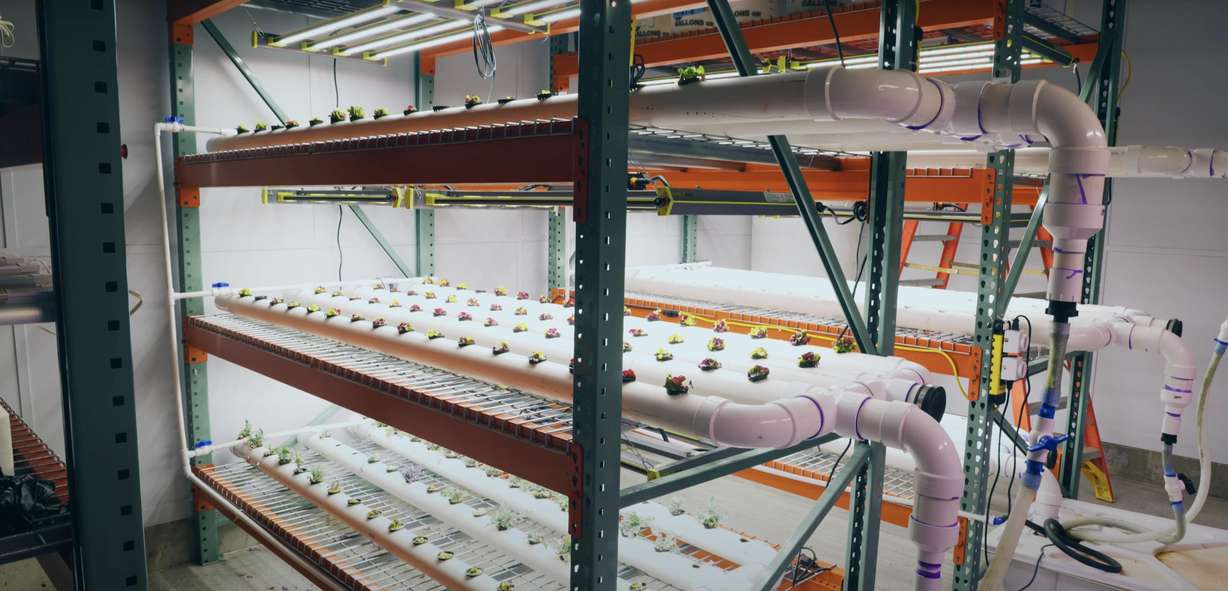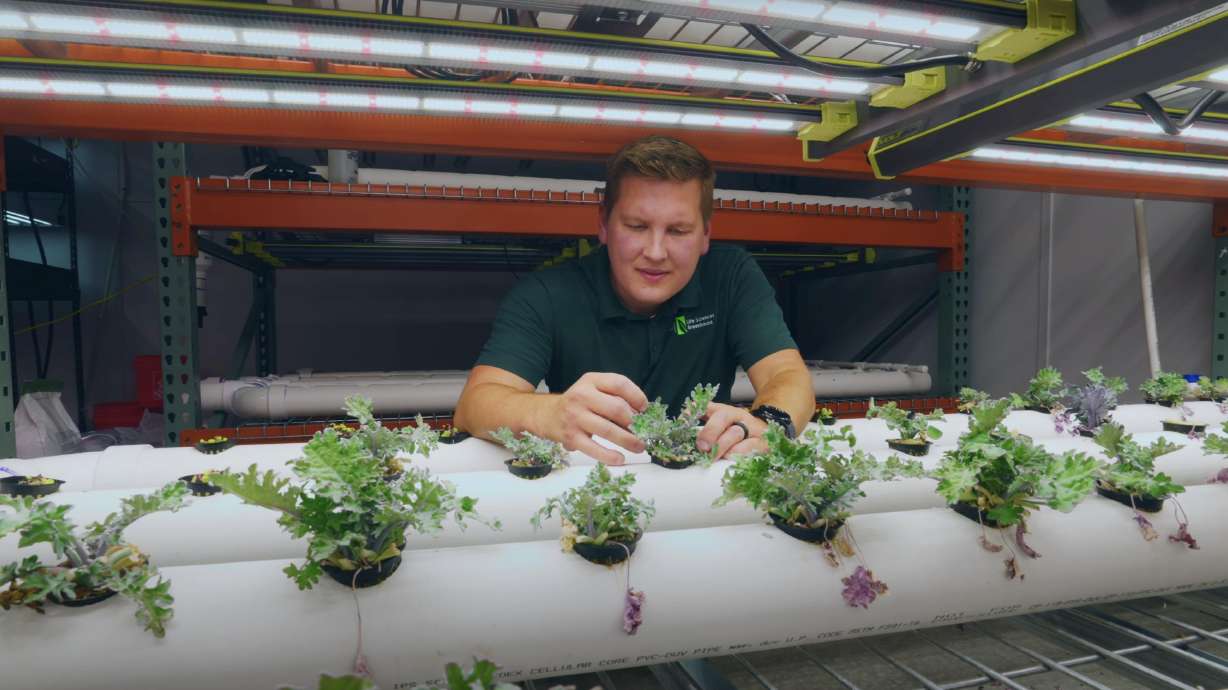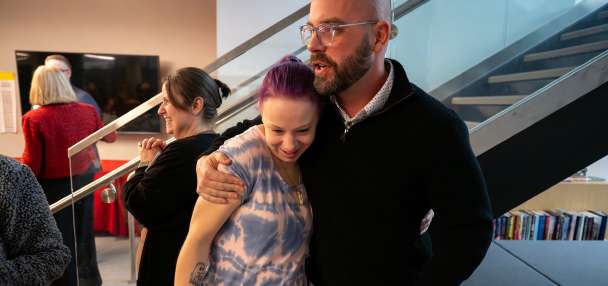Estimated read time: 4-5 minutes
- BYU students designed a hydroponic greenhouse for Provo's Food and Care Coalition.
- The greenhouse produces 400 pounds of produce every three months, enhancing food security.
- It provides fresh produce year-round, addressing food deserts and benefiting the community.
PROVO — Innovative greenhouse designs by BYU students are being used to reduce food insecurity during the winter months at a local food center.
The Food and Care Coalition is a homeless resource center in Provo, but serving 450 meals a day without a budget or consistent donations can be a tricky task, said Brent Crane, the center's executive director.
While the coalition gets plenty of fruits and vegetables donated during the end-of-summer harvest season, recipients are forced to go without high-nutrition ingredients the rest of the year, he said.
"Most of our food is donated from the community. You may have some things in excess and you have things you really need that don't get donated," Crane said.
But a new hydroponic greenhouse is aiming to solve that problem.
The Food and Care Coalition received a donation of supplies for a hydroponic farm, and they approached BYU to help build it to address the gap in fresh produce availability.
Matt Arrington, a professor of horticulture and an expert in indoor farming solutions, designed and built the hydroponics greenhouse with help from a group of students.
Hydroponic systems grow plants in sand, gravel or liquid with added nutrients. So, instead of being grown in soil, the Food and Care Coalition's new greenhouse sprouts tomatoes, herbs and leafy greens in a water solution. With carefully controlled pH levels, temperature, humidity and lighting, the 20-foot by 40-foot indoor farm can produce around 400 pounds of produce every three months.
"Hydroponic systems generate a lot of produce. We're talking about relatively small spaces that make large differences," the professor said.

The greenhouse is composed of three independent systems. An ebb-and-flow system nurtures the seeds until they sprout. A nutrient film technique system uses a pump to circulate the nutrient solution through a channel that lightly bathes the roots of the leafy greens. A trellis system drips nutrients and water directly onto the roots of tomatoes.
Lights in the greenhouse produce 16-hour days, 365 days a year — resulting in consistent harvests every 14 to 21 days. Many of the Food and Care Coalition's greenhouse designs came from similar systems students work on at BYU's hydroponic greenhouse.
"Together, the systems create healthy, fast-growing plants," the university said.
Over the last year, Arrington and his students worked on building out the greenhouse for the coalition. Students helped to build the systems and seed the initial crops.
"The students were deeply committed. They spent hundreds and hundreds of hours of service here. You can see their passion for hydroponics and their passion for helping other people," Crane said.
Addressing food insecurity
The result is a design that "allows us to put a farm anywhere," BYU student Jack Windsor said.
Food deserts are places where it isn't easy to access fresh produce, such as in the middle of a city, he said. But a hydroponic farm can help provide for those areas in need and allow for fresh produce all year long. The indoor design also conserves water, saves space and time and reduces disease and pests. The greenhouse provides a buffer for crops against climate disasters and gradual climate change, a BYU release says.
Arrington believes hydroponic farming is one solution to the increasing problem of food security. Systems like this one wouldn't replace field agriculture, but would supplement it.
"Food security is enhanced as we diversify it. We want local sources. We want international sources. We want hydroponic indoor setups that are sheltered from the outside environment. We want field setups that are inexpensive. Having all these different pieces together is what enhances food security," Arrington said.
Arrington said indoor farms can benefit communities in more ways than just supplemental nutrition.
"We're creating an opportunity to teach residents a skill that has been proven crucial in mental health and recidivism rates in prisons. It's something that brings peace to people. Gardening — the harvesting, the connection with plants — also gives you a certain amount of control over your food system and food security," he said.
The greenhouse will ultimately be run by the Food and Care Coalition, but the students who designed it have been maintaining the system, planting and harvesting.

"Designing this system and building it here has been amazing, but we don't have the ability to get students here all the time to maintain the farm," Windsor said. "And we also don't want to take away the opportunity to serve and to learn from the volunteers and residents here. So, we are developing instruction manuals and in-person training."
He said he is grateful for the opportunity to work on a project that directly serves people in the community.
The coalition's kitchen manager and chef, Kenneth Larsen, is delighted to serve more meal options with his easily available fresh greens and tomatoes available year-round.
As one of nine children with a single mom, it was a struggle for his family to afford consistent fresh produce. With BYU's help, he can make nutritious meals for people in need.
"It was really neat to see the amount of fresh vegetables, and also the color ... and just how fast they grow," Larsen said. "That was a big shocker for me ... this stuff can grow super-fast and produce quite a bit, which makes it a nice blessing for me."










